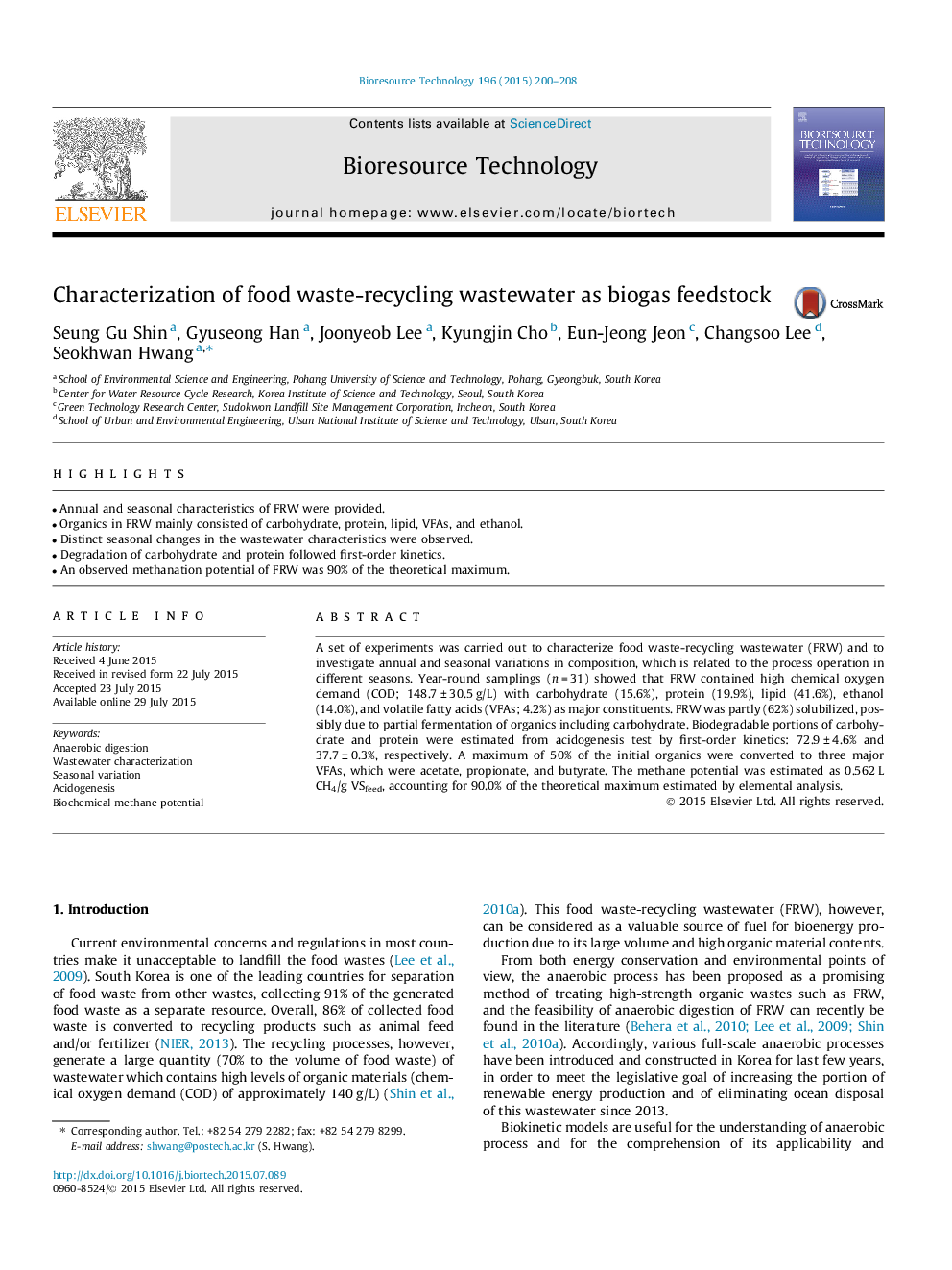| Article ID | Journal | Published Year | Pages | File Type |
|---|---|---|---|---|
| 7073418 | Bioresource Technology | 2015 | 9 Pages |
Abstract
A set of experiments was carried out to characterize food waste-recycling wastewater (FRW) and to investigate annual and seasonal variations in composition, which is related to the process operation in different seasons. Year-round samplings (n = 31) showed that FRW contained high chemical oxygen demand (COD; 148.7 ± 30.5 g/L) with carbohydrate (15.6%), protein (19.9%), lipid (41.6%), ethanol (14.0%), and volatile fatty acids (VFAs; 4.2%) as major constituents. FRW was partly (62%) solubilized, possibly due to partial fermentation of organics including carbohydrate. Biodegradable portions of carbohydrate and protein were estimated from acidogenesis test by first-order kinetics: 72.9 ± 4.6% and 37.7 ± 0.3%, respectively. A maximum of 50% of the initial organics were converted to three major VFAs, which were acetate, propionate, and butyrate. The methane potential was estimated as 0.562 L CH4/g VSfeed, accounting for 90.0% of the theoretical maximum estimated by elemental analysis.
Keywords
Related Topics
Physical Sciences and Engineering
Chemical Engineering
Process Chemistry and Technology
Authors
Seung Gu Shin, Gyuseong Han, Joonyeob Lee, Kyungjin Cho, Eun-Jeong Jeon, Changsoo Lee, Seokhwan Hwang,
